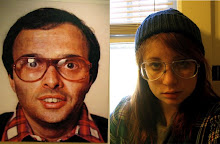Nicholas Bourriaud talks in his book The Radicant about the rise in mass marketing in the 1990s. This was due mainly to the existence of the internet. In order to make up for this lack or original items based on quantity rather than quality, smaller shops like boutiques tried to emphasize an object's originality, "denying the existence of quantity, creating the illusion of scarcity, and playing on the obscure nostalgia for privation (Bourriaud, 105)." He adds the point that this all indicates that a product's uncommonness is more important that what it was made out of, or how it was really made.
This made me really think over what it is that we value in our culture and I believe that it is true that if something seems to be "original" people think it's cooler or more valuable even if it's technically not. This is also very relevant to contemporary art. Nowadays people seem to just be trying to do something rare, something that will shock people, something that hasn't been done before... and they aren't necessarily valuing anymore what the effort was, and the materials went into it.
Now I'm pretty sure that this video clip from Monty Python's Flying Circus is totally relevant. A lot of people loved this show, and a lot of people didn't understand it, or they didn't want to. It was something new and shocking at the time, yet it was fairly simple.
Sunday, February 28, 2010
Subscribe to:
Post Comments (Atom)

There is a fascination with process and production now maybe coming out of the mass production and excess of media. Not sure the big time artists try to be shocking in the old sense of the word but in doing things like putting nothing in the Guggenheim in the name of art.
ReplyDelete